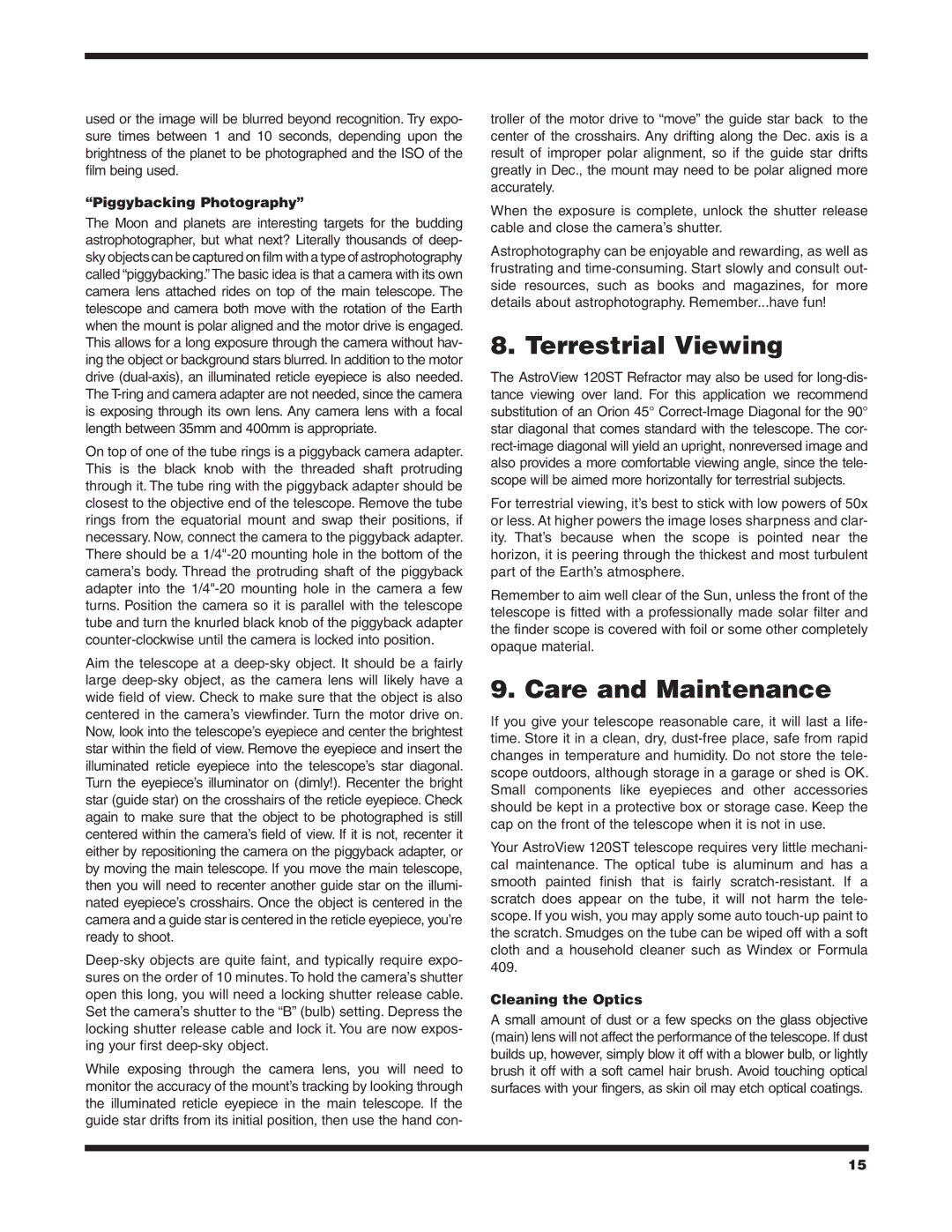
used or the image will be blurred beyond recognition. Try expo- sure times between 1 and 10 seconds, depending upon the brightness of the planet to be photographed and the ISO of the film being used.
“Piggybacking Photography”
The Moon and planets are interesting targets for the budding astrophotographer, but what next? Literally thousands of deep- sky objects can be captured on film with a type of astrophotography called “piggybacking.” The basic idea is that a camera with its own camera lens attached rides on top of the main telescope. The telescope and camera both move with the rotation of the Earth when the mount is polar aligned and the motor drive is engaged. This allows for a long exposure through the camera without hav- ing the object or background stars blurred. In addition to the motor drive
On top of one of the tube rings is a piggyback camera adapter. This is the black knob with the threaded shaft protruding through it. The tube ring with the piggyback adapter should be closest to the objective end of the telescope. Remove the tube rings from the equatorial mount and swap their positions, if necessary. Now, connect the camera to the piggyback adapter. There should be a
Aim the telescope at a
While exposing through the camera lens, you will need to monitor the accuracy of the mount’s tracking by looking through the illuminated reticle eyepiece in the main telescope. If the guide star drifts from its initial position, then use the hand con-
troller of the motor drive to “move” the guide star back to the center of the crosshairs. Any drifting along the Dec. axis is a result of improper polar alignment, so if the guide star drifts greatly in Dec., the mount may need to be polar aligned more accurately.
When the exposure is complete, unlock the shutter release cable and close the camera’s shutter.
Astrophotography can be enjoyable and rewarding, as well as frustrating and
8. Terrestrial Viewing
The AstroView 120ST Refractor may also be used for
For terrestrial viewing, it’s best to stick with low powers of 50x or less. At higher powers the image loses sharpness and clar- ity. That’s because when the scope is pointed near the horizon, it is peering through the thickest and most turbulent part of the Earth’s atmosphere.
Remember to aim well clear of the Sun, unless the front of the telescope is fitted with a professionally made solar filter and the finder scope is covered with foil or some other completely opaque material.
9. Care and Maintenance
If you give your telescope reasonable care, it will last a life- time. Store it in a clean, dry,
Your AstroView 120ST telescope requires very little mechani- cal maintenance. The optical tube is aluminum and has a smooth painted finish that is fairly
Cleaning the Optics
A small amount of dust or a few specks on the glass objective (main) lens will not affect the performance of the telescope. If dust builds up, however, simply blow it off with a blower bulb, or lightly brush it off with a soft camel hair brush. Avoid touching optical surfaces with your fingers, as skin oil may etch optical coatings.
15
